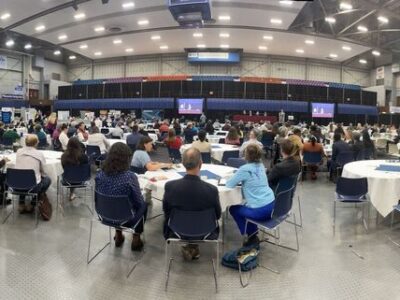For at least 30 million Americans, uploading a document to an email or streaming a television show is extraordinarily difficult. Having a virtual doctor’s appointment or work meeting is impossible. These Americans live in rural and economically disadvantaged areas where high-speed internet is non-existent. Many still rely on dial-up or low-speed DSL connections to access email, websites, virtual learning, virtual healthcare, and to stream entertainment.
A new funding provision of the restructured American Jobs Plan will change this with a proposed $65 billion earmarked to expand the national broadband infrastructure.
This restructured American Jobs Plan also provides more than $300 billion for roadways, railways, waterways, and air transportation. The $65 billion for broadband is actually a significant increase from the amount in the original bill. The administration said that the plan will “deliver high-speed internet to every American home…and create millions of American jobs and modernize our American infrastructure.” The expansion will also reduce the high cost of internet service for many. Legislators across party lines are offering strong support for the expansion. Maine’s Angus King, Minnesota’s Amy Klobuchar and Lindsey Graham of South Carolina have all vocally supported it. The need for equitable high-speed internet access has become even more acute during the pandemic. As more and more Americans work from home, having high-speed internet is a necessity.
“The digital divide doesn’t care what party you’re in or what area of the country you live in,” said Amy Huffman, the National Digital Inclusion Alliance’s Policy Director. “It impacts everyone and therefore it impacts all of our lawmakers, no matter what side of the aisle.”
In some counties, like Mifflin County, Pennsylvania, as many as 29 percent of households do not have access to high-speed internet. In fact, one in five families in Pennsylvania goes without. The families are tired of “cannot load file” messages on their computers. They have children who cannot complete school assignments virtually, or even do their homework. Companies that provide high-speed internet services simply say it’s not cost-effective to build the necessary towers and infrastructure to service the only house within a 10 or 20-mile radius of the areas without coverage.
“You’re not going to, in a cost-effective way, lay fiber to every home, every farm, every community,” said Pennsylvania State Senator Jake Corman. “You have to identify a pot of money…to help build a network with a provider.”
The American Jobs Plan does just that.
“What we’re seeing right now creates a once-in-a-generation opportunity — very similar to building interstate highways or electrifying the country,” said David Gibbons, owner of Centre WISP, a local Pennsylvania internet provider. “But we need a significant amount of funding to deliver the kind of broadband that these areas need in a time frame that makes a difference.”
In counties where people drive to McDonald’s parking lots to use the wifi to work, the plan’s passage cannot come soon enough. It also includes money to subsidize laptops and other devices for those who cannot afford them. It’s also an important step in ensuring educational and medical accessibility for all across the country.
“Expanding broadband across the nation, especially in rural areas, is a smart step in the right direction for our nation,” Illinois Congressional candidate David Palmer recently tweeted, echoing the sentiment of many Americans across all party lines.
Author’s note: My parents live on a farm in northeast Alabama, about 10 miles from Anniston, and 70 miles from Atlanta. They are not in range of any available high-speed internet provider, and use a 20-year-old DSL setup that doesn’t work when it rains, and only allows one device to effectively open any website. They received notice that the service is being discontinued soon. When I write from there, I have to plan on as long as 15 minutes to upload a PDF or Word Document. A Zoom meeting is not an option. There is no clarity on any satellites covering the area, and almost zero cell signal in the area to support a mobile hotspot. Without significant changes in broadband access soon, there will be no internet connection available there.





